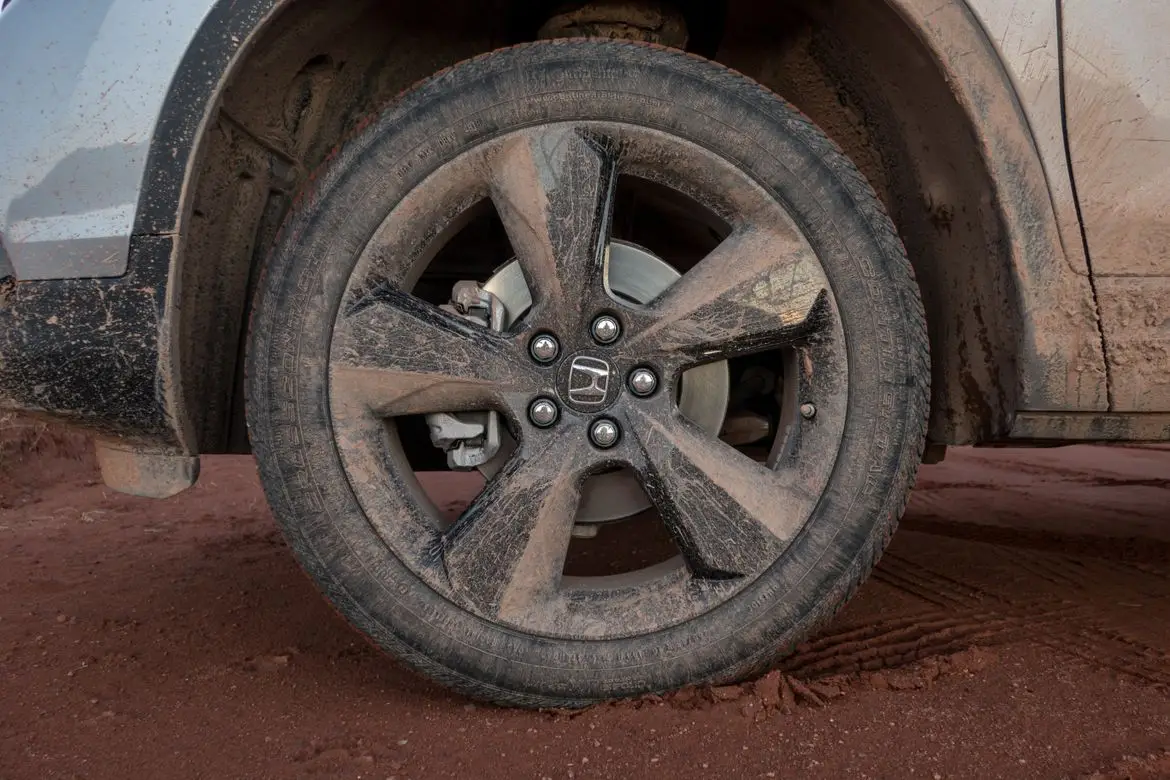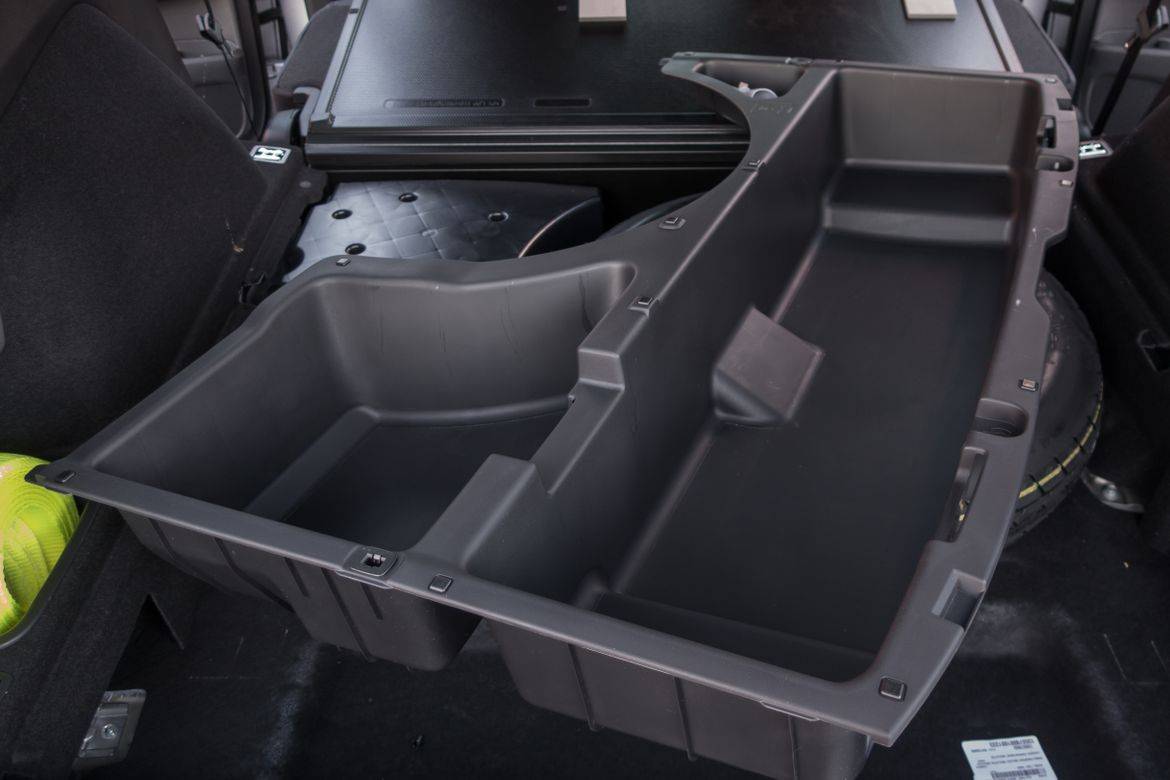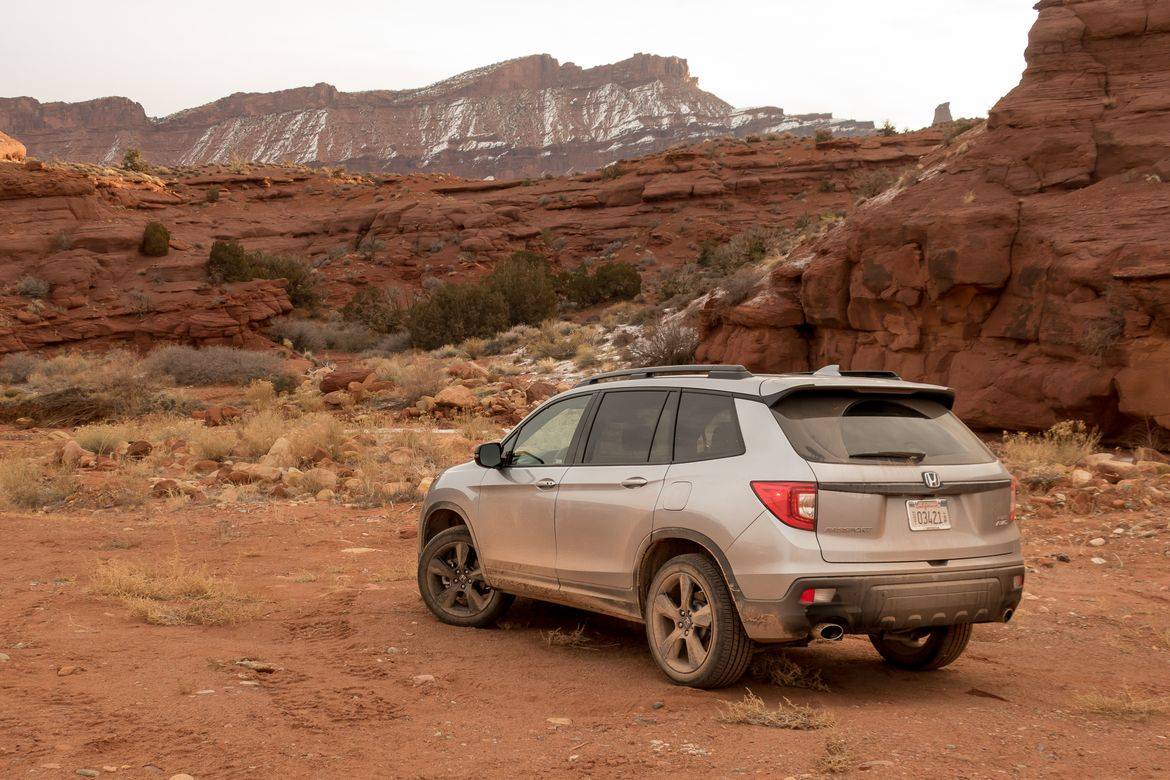




The verdict: The Passport offers a solid mix of on- and off-road capability, along with a robust set of safety features, in a spacious package with good passenger and cargo room.
Versus the competition: Though it’s priced higher than most competitors, the Passport features enough equipment and safety features to justify the difference.
The 2019 Honda Passport might be an all-new vehicle, but its name is not. The previous Passport, which was discontinued in 2002, was a rebadged Isuzu Rodeo that simply wore the Honda name. Much like its predecessor, this new Passport also shares much of its DNA with another vehicle, but this time it’s one of Honda’s own: the three-row Pilot. It would be a mistake, however, to think of the Passport as just another clone; Honda has given it enough distinction that I prefer the Passport to its larger sibling in a few key areas.
The Passport plugs a mid-sized gap in Honda’s lineup. There hadn’t been anything between the compact CR-V and the three-row Pilot — a class that’s becoming increasingly crowded. The Passport now competes in that class against the 2019 Chevrolet Blazer, also recently reborn, and other five-seat mid-size mainstays like the Jeep Grand Cherokee and Ford Edge. Compare the Passport with those vehicles here.
What’s the Same, What’s Different
The Passport and the Pilot ride on the same 111-inch wheelbase (also shared with the Ridgeline, Honda’s mid-size pickup truck). Beyond that, the two SUVs have the same powertrain and even have identical dashboards. The same multimedia system is found in both vehicles, and climbing into the Passport felt very familiar to what I experienced when testing the 2019 Pilot. Compare the Passport and Pilot here.
There are also a few key differences, starting with the most obvious one: size. The Passport is 6.0 inches shorter, almost all of it coming off the rear with the removal of the third row. All-wheel-drive Passports also have 0.8 inch more ground clearance than the Pilot, making them more capable off-road, for a total of 8.1 inches. (Front-wheel-drive Passports have 7.5 inches.)
The Passport is also sold in fewer trim levels. While the Pilot starts with an LX model (as do most Honda vehicles), the Passport eschews that base trim to start with a Sport. After that comes EX-L, Touring and Elite trims.
It also gets a few changes to the powertrain and steering that I found improved the Passport’s driving experience handily versus the Pilot.
Driving Improvements
The Passport features the same 280-horsepower, 3.5-liter V-6 that’s found in the Pilot. A nine-speed automatic is the Passport’s only transmission, and front-wheel drive is standard. All-wheel drive costs $1,900 on lower trims and is standard on Elite models. EPA fuel economy estimates check in at 20/25/22 mpg city/highway/combined with FWD; AWD trails slightly at 19/24/21 mpg.
Honda said it made two key changes intended to make the Passport better off-road, but the tweaks may be more impactful on-road: The throttle mapping is more aggressive and it has a quicker steering ratio, making the steering more responsive. Both these changes fix problems I had with the Pilot, in that its accelerator felt sluggish at times and the steering was too muted, needing more bite.
The result of these updates is an SUV that feels more alive. You feel more connected to the Passport and the road when piloting it (pun intended). I hope these changes make their way onto the Pilot, as well. The added ground clearance does make the Passport feel a bit more like a truck, with more body roll and the sensation that you’re sitting higher off the ground. But it still feels stable at highway speeds and tracks very well; an SUV driving more like a traditional SUV didn’t bother me.
Solid Off-Road
For an SUV on a unibody platform, the Passport is mostly quite capable off-road. The AWD is robust, a true torque-vectoring system that can shift torque between the left and right rear wheels rather than using the vehicle’s brakes to do it, as do most competitors. You can even see it working in real-time via a graphic in the instrument panel. It’s the same system (no surprise) that I found impressive under the Pilot.
The AWD also comes with a few drive modes, including Snow, Mud and Sand. Each changes the throttle response, torque bias and how the torque is split between the rear wheels. For example, Snow mode locks out 1st gear and softens the throttle for gentler launches on the slippery stuff. I tested the Passport in all three aforementioned conditions, and it handled them all very well. Power moves quickly where it needs to go, and the added throttle responsiveness pays dividends.
The Passport’s big limitation, however, is not having the suspension travel or a mode suited for rock-crawling. Going over larger obstacles proved challenging, and none of the drive modes really helped, either allowing too much slip from the wheels or lacking in throttle response. Also complicating matters were the Passport’s street-oriented tires; a set of all-terrains would do wonders. For those who don’t want to do serious off-roading and are just looking for an SUV that’s good down dirt or gravel roads or for heading to snow in the mountains, the Passport is ideal.
Big Insides
The word that comes to mind to describe the Passport’s interior is spacious — it’s got tons of room for occupants and cargo alike. The Pilot’s biggest interior weakness is its third row, and with that gone, what’s left is quite good. Seating is comfortable across both rows, and the cargo area has a giant opening for loading things, as well as plenty of vertical and horizontal space. Behind the backseat is 41.2 cubic feet of cargo room, expandable to around 78 cubic feet (exact figure depends on trim level) with the second row lowered. And lowering the seats is easy thanks to a pair of buttons in the cargo area that can drop either side with a single touch.
My favorite interior innovation may have been underneath the cargo floor: a large storage bin with two cubbies. One of them was large enough to accommodate my backpack — not always the case with these underfloor bins. The bin is also removable, so it can be taken out to be washed, making it ideal to store muddy or dirty items so they don’t get the interior messy; a plastic bin is far easier to wash out than a carpeted cargo area.
The Passport also inherited the Pilot’s dashboard and center console, which is both good (a large center storage bin) and bad (strange, unnecessarily complicated shift buttons). Sport models get only a 5-inch multimedia screen with two USB ports and not many bells and whistles. The EX-L and above get the multimedia system you really want: an 8-inch touchscreen that comes with Android Auto and Apple CarPlay connectivity.
Value
Interestingly, the Passport starts at a higher price than the Pilot: $33,035 for a Passport Sport versus $32,495 for a Pilot LX (all prices include destination charges). At that price, the Pilot might make more sense with its third row and a feature set similar to the Sport’s. Higher up the lineup, however, the cost advantage pendulum swings back toward the Passport. EX-Ls start at $37,455, the Touring is $40,325 and the Elite is $44,725. Each of those is cheaper than the matching trim level of the Pilot, each by increasing amounts (a Pilot Elite costs an extra $4,340).
It’s worth nothing that each of those trim prices is basically what you’ll pay for a Passport. Honda doesn’t offer option packages, and the only real choice beyond trim level is whether or not you want to add AWD, which most folks buying a Passport are likely to seriously consider.
Looking outside the Honda family, the Passport is priced on the higher end of its class, more than pretty much every competitor save the Jeep Grand Cherokee. Its next closest competitor is the Ford Edge, which starts at nearly $2,000 less and comes with a similarly strong set of safety features but a smaller, turbocharged four-cylinder engine.
Though it is expensive, the Passport compares well with the other SUVs mentioned when it comes to features. The advanced safety features that come with Honda Sensing (such as forward automatic emergency braking, adaptive cruise control and lane keep assist) aren’t offered on the Grand Cherokee until its price tag reaches $49,985 (you can get lane keep assist but not the other two). On the Blazer, forward automatic emergency braking isn’t even available until the RS trim level, which starts at $41,795.
It’s tempting to think the 2019 Passport exists simply to plug a hole in Honda’s lineup. To the company’s credit, it did enough not only to differentiate it from the Pilot but also to improve upon it. The powertrain changes make it more fun, and tweaks to the interior and cargo area take care of the practicality side of the SUV equation. The 2019 Passport exceeded my expectations and is a strong entrant in this growing class.
Cars.com’s Editorial department is your source for automotive news and reviews. In line with Cars.com’s long-standing ethics policy, editors and reviewers don’t accept gifts or free trips from automakers. The Editorial department is independent of Cars.com’s advertising, sales and sponsored content departments.






































































